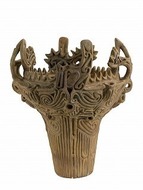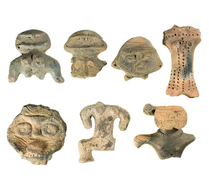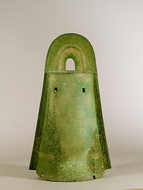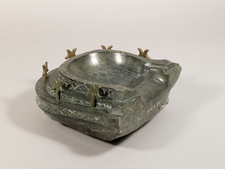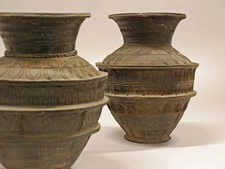日本列島に住む人々は、みずからを取りまく世界をどのように捉えていたのでしょうか。それは自分や自分たちの存在する場や時、あるいは生・老・病・死・愛・災害・犯罪・戦などに由来し、多様でした。そこで起こる様々な事柄を解決するための方法や仕組みも様々であり、時には伝播してきた異文化によって変容することもありました。このゾーンでは、これらの行為によって生み出された「モノ」を「祈りのかたち」として捉えることで、人々の垣間見える「心」の活動を探究します。
[主な展示]
● 山ノ神遺跡復元模型(「神社祭礼に見るモノと心」グループと共同制作)
● 火焔土器、その他縄文土器(縄文時代)
● 土偶(縄文時代)
● 銅鐸(弥生時代)
● 挙手人面土器(古墳時代)
● 石枕(古墳時代、重要文化財)
● 興福寺瓦(古代)
● 経筒(中世)
● 懸仏(中世)
● 銅鼓(中国)
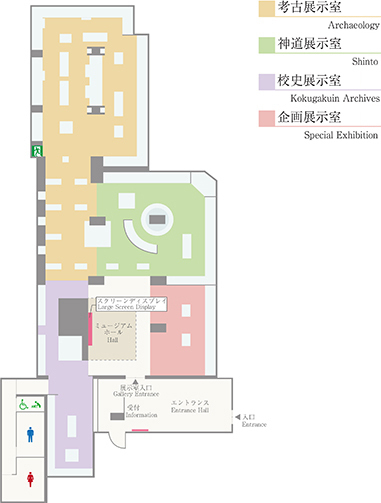
On occasion in this museum, some materials which are in the publication are not exhibited as they are changed on demand.
전시 자료
-
Deep pot
Middle Jōmon period, ca. 3,000 B.C.E.
Iwanohara site, Fukasawamachi, Nagaoka City, Niigata Pref.Deep pot(umataka type, flame-style pottery) The Iwanohara site located on the terrace of the left bank of the Shinano River is a ...more
-
Clay figurine (dogū)
Late Jōmon-final Jōmon period, ca. 2500-300 B.C.E.
Tatsugi shell mound, Tatsugi, Tone Town, Ibaraki Pref., Shinpukuji shell mound, Iwatsuki Ward, Saitama City, Saitama Pref., etc.Human figurines from the Jōmon period are thought to represent a belief in supernatural beings. While produced from the earlie...more
-
Bronze bell (dōtaku) with crossed-bands pattern
Thought to have been excavated from the Ōiwayama site, Koshinohara,Yasu City, Shiga Pref.
Middle Yayoi period, ca.1st century B.C.E.These artifacts are called the "Tossenchū type 1"; among bronze bells characterized by cross-band patterns of six sections dr...more
-
Bronze mirror with triangular rim, design of three deities and three animals
Early Kofun period, ca. 4th century C.E.
From the Ōtsuki Bankei collectionThis mirror is believed to belong to one of the last groups of imported mirrors, prior to the socalled imitative triangular rimm...more
-
Pottery with human face and raised hands
Early Kofun period, ca. 4th century C.E.
Katayama site, Wakaho-Hoshina, Nagano City, Nagano Pref.Located on the southern bank of the Hoshina River (tributary of the Chikuma River), the Katayama site is an unusual archaeologi...more
-
Stone pillow (Important Cultural Property)
Middle Kofun period, ca. 5th century C.E. Gift of the Archaeological Society of Kokugakuin University
Anesaki Futagozuka Tumulus, Anesaki, Ichihara City, Chiba Pref.The Anesaki Futagozuka Tumulus located in the Yōrō River basin is a keyhole-shaped tomb mound that can be dated to the late-midd...more
-
Cinerary urn
Heian period, ca. 9th century C.E.
Kaneda Government Office site (found within the Kokonoe-Higashioka abandoned temple site), Higashioka, Tsukuba City, Ibaraki Pref.The ruins of the ancient Kaneda Government Office site are located in the west-bank river basin of the Sakura River. The site rep...more













